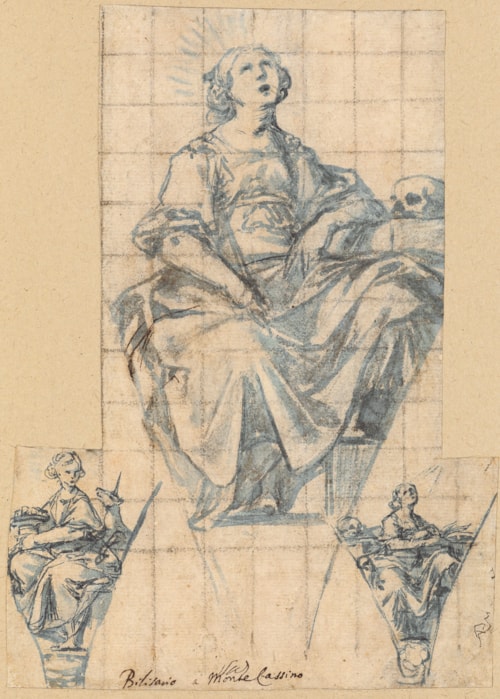
Belisario CORENZIO
Acaia 1558 - Naples 1646
Biography
Of Greek origins, Belisario Corenzio is said by his biographer Bernardo de Dominici to have worked in the studio of Jacopo Tintoretto in Venice before settling in Naples, although this is unlikely. He was certainly already living in Naples at a very young age, as in 1574 he is documented as an apprentice in the workshop of another Greek painter there. Although Corenzio probably completed his studies in Rome, he is further documented in Naples between 1590 and the 1640’s, and in fact seems to have worked in the city for his entire career. His earliest known works date from the early 1590’s, and include major fresco cycles for the churches of Santa Maria la Nova and Sant’Andrea delle Dame. While working at the Certosa di San Martino in 1592 he came under the influence of the Roman painter Cavaliere d’Arpino, who had worked at the Certosa a few years earlier. Arpino’s influence was to remain dominant on the young artist throughout the next decade, and he may indeed be said to have been Corenzio’s master. By the turn of the century Corenzio had become the leading painter in Naples, painting altarpieces and fresco cycles for such major Neapolitan churches as the Gesù Nuovo, the Monte de Pietà, SS. Severino e Sossio, Santissima Annunziata, San Paolo Maggiore and many more. He also painted a series of frescoes in the Palazzo Reale, executed around 1630, and decorated the crypt of the Duomo at Salerno. Although well established as a local artist of considerable assurance and estimation, Corenzio continued to be open to the work of those painters from Rome who were briefly active in Naples, including Caravaggio and Guido Reni.
Corenzio was one of the first Neapolitan artists to leave a fairly large corpus of drawings. As a draughtsman, he developed a distinctive style, with fluid washes and a liberal use of white heightening, often working on coloured paper. De Dominici noted that ‘One sees many drawings by Belisario…and truly some of his [drawings] especially of figures, are so good that they could be from the hand of Tintoretto; in imitation of whom he used to draw on tinted paper, heightened with white.’ The use of blue wash in this drawing is another characteristic of Corenzio’s draughtsmanship.


